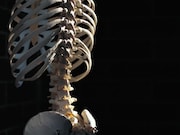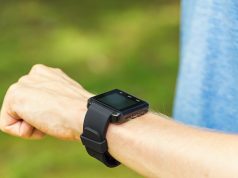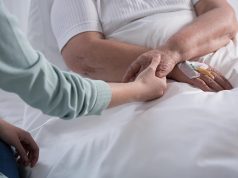Bone structure value determined by software tool significantly correlated with bone mineral density
MONDAY, July 15, 2019 (HealthDay News) — A new measure derived from conventional X-rays and a machine learning algorithm is effective for assessing bone-specific effects of osteoporosis treatment, according to a pilot study published in the July issue of Skeletal Radiology.
Hans Peter Dimai, M.D., from the Medical University of Graz in Austria, and colleagues assessed the clinical applicability of a software tool developed to extract bone textural information from conventional lumbar spine radiographs using pixel grey-level variations and machine learning. The resulting bone structure value (BSV) was tested and compared to bone mineral density (BMD) in postmenopausal women treated for osteoporosis with the monoclonal antibody denosumab.
The researchers found that after three years and after eight years of treatment with denosumab, mean lumbar spine BMD and mean lumbar BSV were significantly higher compared with baseline. At eight years, there was a 42 percent overall increase in dual X-ray absorptiometry-derived lumbar spine BMD and a 255 percent overall increase in BSV. There was a significant overall correlation between BMD and BSV.
“This pilot study provides evidence that lumbar spine BSV as obtained from conventional radiographs constitutes a useful means for the assessment of bone-specific treatment effects in postmenopausal women with osteoporosis,” the authors write.
Several researchers are employees of Braincon.
Copyright © 2019 HealthDay. All rights reserved.








